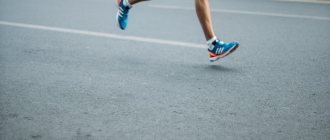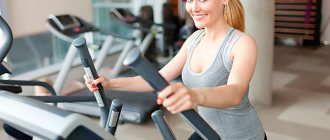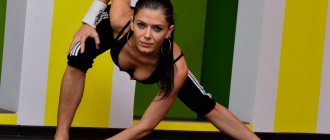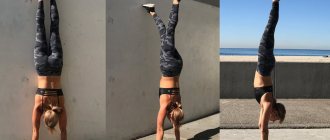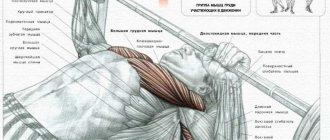- What is natural running?
- Running on your heel or on your toes: which is correct?
- Running technique: what to look for, main mistakes and video
The term “natural running” has become a trend along with the desire for natural foods, lifestyles and materials. All this is more useful than harmful, only naturalness must be correctly understood. Man is already so far from his wild ancestors and life in nature that naturalness is not always beneficial.
In a strict sense, natural running is barefoot running. If running on asphalt, wear sneakers with minimal cushioning. But do not forget, the musculoskeletal system of a modern person is not ready for such loads. Therefore, starting to run straight from the toe in sneakers without cushioning is like learning to swim by being thrown overboard during a storm. But this is how they teach running in some schools and prepare you for a marathon from your couch in 3 months.
In the article we will look at what the correct running technique is, why it is not just about foot placement, what natural running means, its pros and cons.
Start by walking
If the last time you ran was at school, and then reluctantly, one flight of stairs causes shortness of breath, or if you are overweight, it is better to start with walking.
For at least a week, aim to walk 10,000 steps every day. It’s just a number, but it’s better to have something to focus on: it makes it easier to start.
Every kilometer you walk improves your fitness and prepares you for your first run. If you lead an active lifestyle and walk a lot, you can immediately start running training.
Alternate running with walking
Master of Sports in Athletics and coach Artyom Kuftyrev says that many beginners perceive running as quickly covering a distance, so they quickly run out of steam.
Artyom Kuftyrev
Master of Sports in Athletics, marathon runner, founder of the Instarun running school
On their first run, beginners are frightened by new sensations: the pulse and breathing rate increase, the pressure and speed of blood circulation increase, perhaps somewhere something is stinging out of habit. The body is trying to adapt to the new operating mode, but this takes time. If you endure a little, it will work out and it will be easier for you. But this is only if you chose an adequate pace for yourself from the beginning!
Give your body a chance to adapt: start gradually. Here's an example of a beginner's run-walk workout from our expert.
Set a timer and run for 3 minutes, then walk for the next 2 minutes—that's one set. There are six of them to make in total, which will take you 30 minutes.
However, remember that three minutes of running is not sprinting as hard as you can. You won't last long this way. The running pace should be comfortable.
Artyom Kuftyrev
Master of Sports in Athletics, marathon runner, founder of the Instarun running school
To maintain the right pace, use a simple rule: you must be able to carry on a continuous conversation while running. This pace is also called conversational.
It is often advised to run with an eye on your heart rate, but if you do not have a chest heart rate monitor, it will be of little use. Fitness bracelets and watches determine heart rate very roughly and give huge errors.
Moreover, Artyom claims that the numbers may vary depending on the individual person and at first it is better to focus on your feelings.
If you can't maintain a conversational pace for three minutes, reduce your running time. For example, you can run for 2 minutes and walk for 3, or run for 1 minute and walk the remaining 4.
French bench press for triceps
The body is located on a bench located perpendicular to the floor, the legs rest on the floor. In the starting position, the arms are straightened and extended upward. This exercise requires a partner to hold the barbell and provide support. The projectile is taken with the upper grip. The arms are tilted back towards the head by 45 degrees, while the upper part of the arm from the elbow joint to the elbow should remain motionless. The barbell is lowered down until the bend of the arm at the elbow is 90 degrees. After this, you return to the starting position and repeat the set.
Train regularly and increase your time
To quickly adapt the body, regular exercise and recovery time are necessary.
Artyom Kuftyrev
Master of Sports in Athletics, marathon runner, founder of the Instarun running school
The most effective growth in training is observed among runners who train 3-4 times a week. If you do workouts every other day, then in two weeks you will complete seven of them. This rhythm will allow you to have time to recover and not lose your skill.
At the same time, to progress, you need to gradually increase your running time. If 3 minutes of running and 2 minutes of walking feels comfortable, use the following plan:
- Week 1: 3 minutes running, 2 minutes walking - 6 series (30 minutes).
- Week 2: 4 minutes of running, 2 minutes of walking - 5 series (30 minutes).
- Week 3: 5 minutes of running, 2 minutes of walking - 4-5 series (28-35 minutes).
- Week 4: 5 minutes of running, 1 minute of walking - 5 series (30 minutes).
- Week 5: Full 30 minutes of running without walking.
- Week 6: 35 minutes of running.
- Week 7: 40 minutes of running.
- Week 8: 45 minutes of running.
If you feel very tired before finishing your workout as planned, you are either running too fast or running too long.
Go back and repeat the previous week again, and then try again. And under no circumstances should you quit under the pretext: “After all, running is not my thing.” You just need more time to adapt.
If you continue, you have already won.
Spreader
Develops explosive strength, strengthens the adductor muscles of the hips, gluteal muscles and quadriceps.
Technique:
- From a lunge position, jump as high as you can and straighten both legs.
- At the top of the jump, switch your legs.
- Land on bent legs and repeat the exercise.
If you want to make the exercise more difficult, change your legs in the air twice.
Photo: istockphoto.com
Always warm up well before training
Before jogging, always do a joint warm-up.
Artyom Kuftyrev
Master of Sports in Athletics, marathon runner, founder of the Instarun running school
Warm-up exercises activate your body's fundamental motor units and ensure optimal distribution of synovial fluid in your joints, which improves gliding and mobility.
In the video, Artyom Kuftyrev shows a short warm-up that you need to make part of your workout. This is especially important for those who run in the morning, when the body is quite stiff and stiff. Perform the exercises smoothly, without sudden movements.
Cool down after your workout
Artyom says that the workout can be completed with dynamic or static stretching. Which one depends on your goals:
- If you're not going to do anything after your run, opt for static stretching.
- If you want to end your run with circuit strength training or jumping exercises, do dynamic stretching. This is a set of multi-joint exercises that will help you warm up your body more thoroughly, prepare it for other movements and reduce the risk of injury.
How to do static stretching
Static stretching is when you take a certain position in which the muscles are stretched and hold it for some time. It will help relax the major muscle groups that worked while running. In the video below, our expert shows a set of stretching exercises after a run.
Hold each position for 45–60 seconds, stretch without fanaticism (pain should be minimal).
How to do dynamic stretching
Dynamic stretching is a set of multi-joint exercises that help stretch your muscles more thoroughly. It will help you avoid injury during intense movements. In the video below, Artyom shows how to properly perform dynamic stretching.
Unfortunately, not only beginners, but also those who gave themselves a second chance to become a runner after the first failure, ignore warm-up and cool-down, citing lack of time.
Don't skip the warm-up and cool-down: this is as important a part of your workout as the running itself.
How to dress correctly
The right choice of training clothing and especially running shoes is as important an element of the effectiveness of the training process as warming up or proper technique. Clothing for classes should be chosen from natural materials. It should be appropriate for the time of year, not restrict movement and weigh a little.
Particular attention should be paid to the choice of running shoes. Running shoes must be made from environmentally friendly materials, withstand long-term mechanical impacts, have good grip and shock-absorbing soles.
It is advisable to choose shoes from well-known manufacturers. This is not worth saving on. Professionals and those who have been running for a long time select the right running shoes based on the orthopedic features of their feet and the surface on which they will run. For beginner runners, high-quality running shoes from a well-known brand with a shock-absorbing heel pad and a wide sole are suitable.
Video. Jogging technique
Running technique for beginners
Proper running for weight loss. Jogging technique - Jogging
Jogging. Jogging.
Correct jogging technique
- >
Running technique for beginners
So, you've gotten ready and warmed up. It's time to start jogging. However, there are several points that are worth paying attention to. A video lesson by Alexandra Boyarskaya will help make your jogging as comfortable as possible. Join the movement!
- >
Proper running for weight loss. Jogging technique - Jogging
Video about how to run correctly without pain in joints and tendons.
- >
Jogging. Jogging.
- >
Watch your body position
The quality of your running depends not only on how fast you move your legs, but also on the work of all other parts of your body.
Remember a few simple technical details that you can fix yourself:
- your gaze forward, do not look at your feet.
- Your shoulders need to be relaxed. Many runners strain them, which causes physical fatigue and slows their pace. If you feel that your shoulders are tense, simply shake your arms and try to relax them.
- Your arms should move back and forth like a swing. Do not spread your elbows to the sides, bend them at right angles, make fists with your hands, but do not squeeze them with all your might.
- The feet should be placed under the center of gravity, and not in front of the body. True, this is quite difficult to track (unless you ask to be recorded on video and have your technique analyzed).
It is also very important to learn how to relax your body while running.
Artyom Kuftyrev
Master of Sports in Athletics, marathon runner, founder of the Instarun running school
Most often, novice athletes have excessive tension throughout the body. This interferes with both normal blood flow and the overall running experience. In addition, tension greatly limits the mechanics of movement and entails various inflammations and pain in the legs. Therefore, the main advice: learn to relax while running!
If you want to teach equipment, find a trainer. If you are going to cope on your own, be sure to read about the technical aspects.
Research the question


